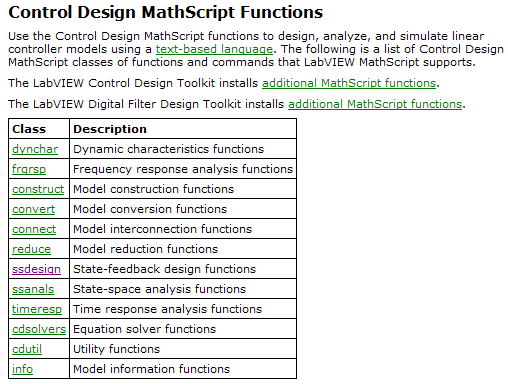
Several parallel while loops, one of which functions as the "master", controlling the "slave" loopsĪ simple GUI for data acquisition and visualizationĪttention to and prevention of race conditions is required.Īsynchronous of multithreaded execution of loopsĪ master loop controls the execution of two slave loops, that communicate using notifiers, queues and semaphores data-independent loops are automatically executed in separate threads

GUI events are captured by an event structure queue, inside a while loop the while loop is suspended by the event structure and resumes only when the desired events are captured The most common design patterns for graphical LabVIEW applications are listed in the table below.Ĭommon design patterns for LabVIEW applicationsĮxchange information without using global variablesĪ shift register of a while loop is used to store the data and the while loop runs only one iteration in a "non-reentrant" virtual instrument (VI)Īll owning virtual instruments (VIs) are kept in memory.Ĭontrolled execution that depends on past eventsĬase structure inside a while loop pass an enumerated variable to a shift register, representing the next state complex state machines can be designed using the Statechart moduleĪll possible states must be known in advance. Furthermore, it is possible to create distributed applications, which communicate by a client–server model, and are thus easier to implement due to the inherently parallel nature of G.Īpplications in LabVIEW are usually designed using well-known architectures, known as design patterns. The most advanced LabVIEW development systems offer the ability to build stand-alone applications. For complex algorithms or large-scale code, it is important that a programmer possess an extensive knowledge of the special LabVIEW syntax and the topology of its memory management. This is a benefit on one side, but there is also a certain danger of underestimating the expertise needed for high-quality G programming. The LabVIEW programming environment, with the included examples and documentation, makes it simple to create small applications. The graphical approach also allows nonprogrammers to build programs by dragging and dropping virtual representations of lab equipment with which they are already familiar. This implies each VI can be easily tested before being embedded as a subroutine into a larger program. Thus a virtual instrument can be run as either a program, with the front panel serving as a user interface, or, when dropped as a node onto the block diagram, the front panel defines the inputs and outputs for the node through the connector pane. Nodes are connected to one another using wires, e.g., two controls and an indicator can be wired to the addition function so that the indicator displays the sum of the two controls. Collectively controls, indicators, structures, and functions are referred to as nodes. The structures and functions are found on the Functions palette and can be placed on the back panel. The back panel also contains structures and functions which perform operations on controls and supply data to indicators. All of the objects placed on the front panel will appear on the back panel as terminals. The back panel, which is a block diagram, contains the graphical source code. Indicators are outputs: they indicate, or display, the results based on the inputs given to the VI. Controls are inputs: they allow a user to supply information to the VI. The front panel is built using controls and indicators. The last is used to represent the VI in the block diagrams of other, calling VIs.

Each VI has three components: a block diagram, a front panel, and a connector pane. LabVIEW programs-subroutines are termed virtual instruments (VIs). LabVIEW integrates the creation of user interfaces (termed front panels) into the development cycle.
#Mathscript node labview 2017 free#
NI released the free for non-commercial use LabVIEW and LabVIEW NXG Community editions on April 28th, 2020. The latest versions of LabVIEW are LabVIEW 2020 and LabVIEW NXG 5.0, released in May 2020.
#Mathscript node labview 2017 windows#
The G dataflow language was originally developed by Labview, LabVIEW is commonly used for data acquisition, instrument control, and industrial automation on a variety of operating systems (OSs), including Microsoft Windows as well as various versions of Unix, Linux, and macOS. The graphical language is named "G" not to be confused with G-code. Laboratory Virtual Instrument Engineering Workbench ( LabVIEW) : 3 is a system-design platform and development environment for a visual programming language from National Instruments. Data acquisition, instrument control, test automation, analysis and signal processing, industrial control, embedded system design


 0 kommentar(er)
0 kommentar(er)
